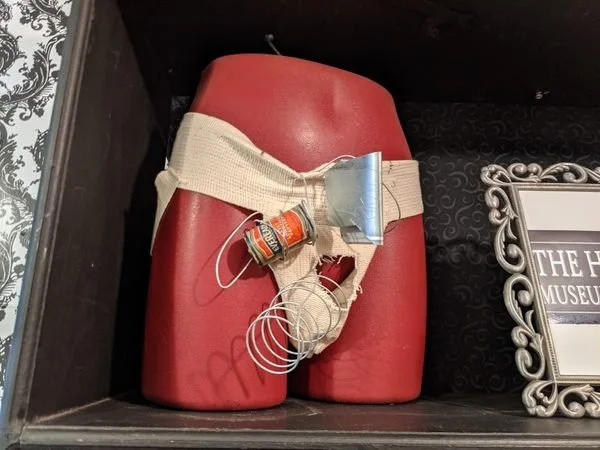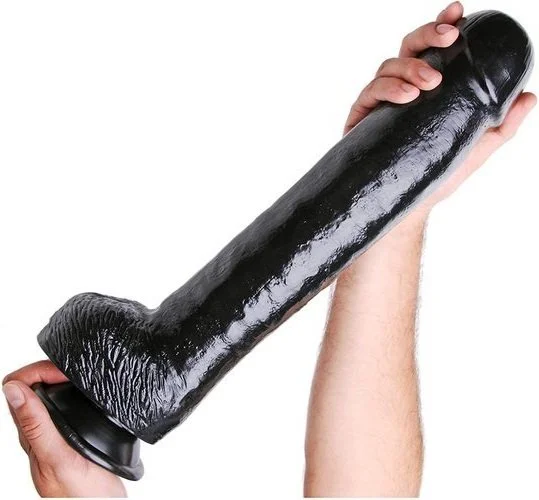From Stone Age to smart toys: a hilarious history of sex toys through the ages
Ah, sex toys—a topic that might make some blush, others giggle, and a few nod knowingly. But before you dismiss them as modern inventions born from late-night infomercials, let’s take a romp through history to uncover the surprisingly ancient origins of these pleasure devices. Spoiler alert: our ancestors were far more inventive (and frisky) than you might think.
A few years ago I was lucky enough to visit the Sex Museum in New York City. The tour begins with the more serious history of sex through artifacts, images, and even cave art. Then, as visitors dive deeper into the exhibits (literally, you have to walk downstairs) the absurdities and fun of sex themed activities left me with a joyous sense of body positivity and a hole burnt through my wallet at the gift shop.
So, just in time for Valentine’s day, let’s go down (wink, wink) in history.
Ancient Beginnings
Long before the days of discreet online shopping, early humans were already getting creative in the bedroom. Archaeological evidence suggests that as far back as 30 thousand years ago our Paleolithic predecessors were crafting phallic objects. These were made of stone and bone, giving a whole new meaning to “boner.” While some argue these artifacts were mere fertility symbols, others believe they served a more… hands-on purpose. After all, necessity is the mother of innovation and Neanderthals were horny.
Fast forward five thousand years to ancient Egypt, where the Nile wasn’t the only thing rising. Egyptian women are believed to have used polished stone or wooden phalluses to keep themselves entertained, especially during those long pyramid building seasons when their partners were busy with their own rock-hard objects. Cleopatra herself was rumored to have enjoyed a gourd filled with buzzing bees or two—sort of an organic vibrator, if you will.
Meanwhile, in ancient Greece, the olisbo—a leather or wooden phallus—was all the rage. Greek playwright Aristophanes even mentioned these devices in his plays, indicating their common use. While I could not find a quote from his plays, Aristophanes still offers great wisdom in other noted texts. For example, a famous attribution of his is “open your mind before your mouth.” I wonder what he wanted people to open next.
And let’s not forget the ancient Romans, who were known for their hedonistic tendencies. They embraced the fascinum, a phallic charm believed to ward off evil. While primarily used as amulets, some suggest they might have had dual purposes. In the ruins of Pompeii archeologists have found evidence of sidewalk paths which lead the way to brothels, but instead of arrows showing the direction… it’s stone penises. When in Rome, indeed.
Excavated olisbos from ancient Greece. Photo curtesy of Focus.it.
Medieval Times
The Middle Ages are often portrayed as a time of chastity belts and prudishness, but behind closed castle doors, things were a bit more liberated. Dildos made from leather, wood, and even bread (yes, bread!) were in circulation. Italian writer Pietro Aretino’s 16th-century work “The School of Women” references women using bread dildos softened and preserved with wax. While the men worked, the ladies had to get their bread, too. Hey, I’m not judging people for doing what they had to do.
Medieval times had their share of scandalous stories splashed across tabloids. While there weren’t exactly sex parties in the modern sense, there were infamous moments involving excess and debauchery. For example, both Pope Alexander VI and King Henry VIII were infamous for their licentious lifestyles and orgiastic rumors consumed their reputations.
Wooden or stone objects resembling modern-day “strap on” devices were recorded in some historical texts in which it is noted that women would “play the man.” Physicians also recommended various objects—like cucumbers—for therapeutic use, if you catch my drift. Medieval sex toys weren’t exactly discreet. In fact, some objects were mentioned in medical texts as “treatment” for ailments, often under the guise of balancing humors.
While these items weren’t advertised in catalogs, the pursuit of pleasure definitely persisted, proving that humans have always had a knack for improvisation. I’m sure Robin Hood and Maid Marion had their fair share of fun. Arthurian kink, anyone?
Female pleasure was often considered a sin in Medieval times. One author wrote of women, saying, “it is said that they use instruments of diabolical operation to excite desire.” Image curtesy of The Toy.
The Victorian Era
Jumping forward another 300 years, the Victorian Era society was known for its stiff corsets and even stiffer upper lips (I wonder what their lower lips were doing, get it?) Despite their prim exteriors, they were pioneers in the world of mechanical pleasure. The late 19th century saw the invention of the first electric vibrators, initially marketed as medicinal devices to treat “hysteria” in women. Doctors believed that inducing hysterical “paroxysm” (a.k.a. orgasm) would cure various ailments. These early vibrators were bulky contraptions, but they laid the groundwork for the sleek devices we know today.
Despite the era’s obsession with modesty, the Victorians were surprisingly inventive when inventing new sex toys. Dildos were not yet sleek or silicone-based like modern ones, but the Victorians were nothing if not resourceful. Made from materials like ivory and rubber, these items were sometimes sold in discreet packaging and could be found in more “liberal” parts of Europe.
Throughout this article I have neglected my male readers and their sexual needs, so let’s not forget about the contraptions marketed to them. While less discussed, there were devices promising to aid men’s performance, often labeled as “improved vigor.” These devices, like their female counterparts, were often disguised as something entirely innocent or medically necessary. Because nothing says “I’m not doing this for pleasure” like a metal contraption worn on your hips.
In essence, Victorian sex toys were an odd combination of shame and innovation, a time when society frowned upon pleasure, but the marketplace just kept buzzing with alternatives to the sin of the flesh.
An early prototype of vibrating undergarments designed to stimulate both men and women. Photo curtesy of Atlas Obscura.
The 20th Century
The last century witnessed a sexual revolution, and with it, sex toys became more accessible and social acceptable. The 1960s and 70s saw the rise of the silicone dildo and the Rabbit vibrator, popularized by a certain episode of “Sex and the City.” Adult stores began popping up, and the conversation around sexual wellness began to shift. The era of revolution and invention was the dawn of the modern sex toy era. It arrived with the industrial age, and let’s just that society was starting to get a little more progressive.
The 1920s marked the invention of the electromechanical vibrator. Forget flapper dresses and jazz—this was the time when the vibrator shed its medical origins and went mainstream. Finally pushing past that medical stigma, it was clear that people were finally getting the message that pleasure might just be a valid pursuit. So, with a bit of electricity, women began privately enjoying their personal gadgets to release stress.
In the 1970s disco balls and polyester were all the rage and so was vibration. “Back massagers” in every color of the rainbow were advertised in magazines and on TV. The market exploded with variations on the theme, now including unrealistically sized models. The sex toy world was sizing up!
At the end of the century (when I was born!), sex toys were no longer a taboo topic; they were a cultural mainstay and even mainstream media was starting to get in on the joke. A vast array of late-night infomercials and hotline advertisements indicated that pleasure was, in fact, a human right. As the century wrapped up, new toys were seen each day; we had vibrators, butt plugs, anal beads, you name it!
A modern dildo advertisement. The Black Dragon is over 14 inches long and weighs more than 3 pounds. All this could be yours for only $100. Photo curtesy of Dick In The Mail.
Today, the sex toy industry is booming, with innovations ranging from app-controlled devices to eco-friendly materials. The stigma has nearly vanished and discussions about sexual health and empowerment are more open than ever. I’ve even been so open as to talk with my mom about it! Whether you’re into high-tech gadgets or prefer something more traditional, there’s a toy out there for everyone.
Throughout history, humans have sought ways to enhance pleasure, break taboos, and explore their sexuality. From carved stones to bee-powered vibrators, our ancestors blazed the trail we now walk—or, thrust. So, the next time you encounter a modern sex toy, remember: it’s just the latest chapter in a long, inventive, and often humorous history of human sexuality.
From my heart-shaped box to yours, happy Valentine’s Day.



